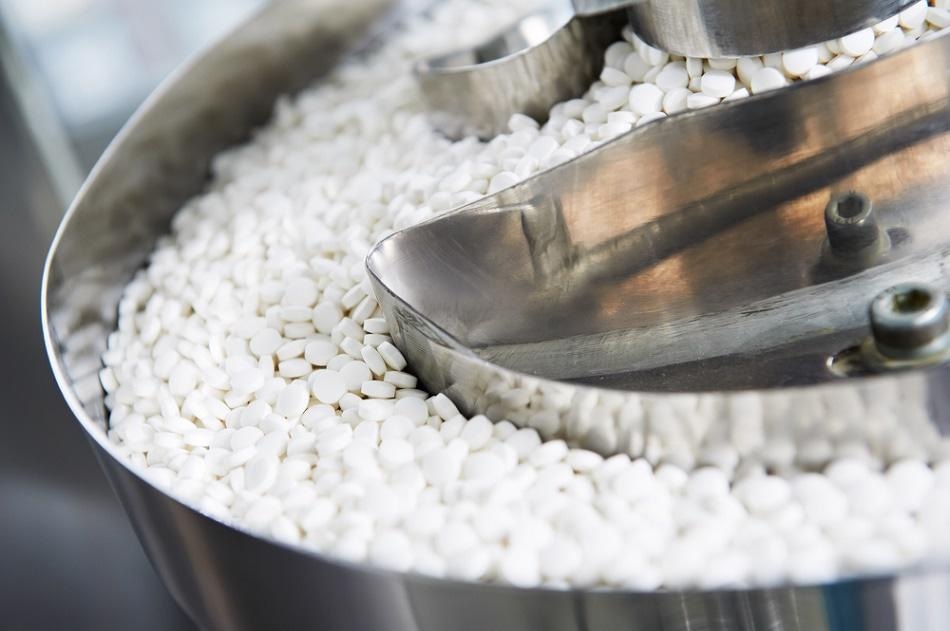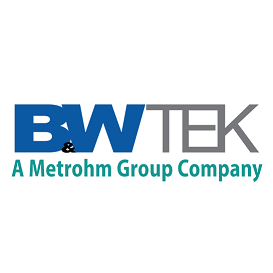The production of solid dosage pharmaceuticals requires the utmost blend uniformity, which can be achieved by the careful control of both the formulation being used and how it is mixed. The blend uniformity is particularly important for ensuring consistency and uniform drug concentration in the final solid dosage form.

Image Credit: Dmitry Kalinovsky/Shutterstock.com
Additionally, Content Uniformity (CU), which relies heavily on the proper blend uniformity of the final pharmaceutical product, must be verified for product release. During the development process, formulation procedures may be optimized from a theoretical process standpoint.
However, regardless of the initial procedure, validation of the blend uniformity must be conducted both during the pilot and scale-up stages. Without proper blend uniformity, it is possible that poor quality pharmaceutical products will emerge.
Producing Pharmaceuticals with Uniform API Content
To ensure that a pharmaceutical product contains the Active Pharmaceutical Ingredient (API) for each unit dose, it is imperative that the formulation procedure produces a homogeneous blend of all ingredients of a solid dosage form. For this purpose, the pharmaceutical industry typically utilizes a granulation process to increase the dissolution rate, flowability and density of the API to ultimately promote an improved distribution of the API in low dose formulations.
During the manufacturing process, various factors including non-ideal granule characteristics such as particle size and assay distribution, low tablet dose, particle size differences with excipients and segregation issues, can all play a role in impacting the blend uniformity of the final product.
The chemical and physical properties of various drugs can be influenced by particle size, distribution and shape. For example, large differences in the particle sizes between active components and excipients can lead to de-mixing effects and ultimately make thorough mixing a much more difficult task to achieve. This effect is further magnified when the diluents and active raw materials are of markedly different sizes.
Particle shape also plays an important role in determining the flow and mixing efficiency of powders and granules. For example, fine powders are much more open to attack from atmospheric oxygen, heat, light, humidity and unwanted interactions between the drug and excipients as a result of their increased surface exposure.
Overall, it is imperative to achieve batch homogeneity of powder mixtures by uniformly blending and then compressing uniform tablets with the correct API concentration in each unit dose. General testing procedures for determining content uniformity of the final pharmaceutical product release are included in pharmacopoeias of both the US and Europe.
How is API Uniformity Currently Measured?
Analytical methods that are used to determine the uniform distribution of a pharmaceutical product’s API across the full batch must be reliable and simple enough for routine production. The physical sampling of a powder mixture, which can be conducted by using a sampling thief, for example, will not always provide an accurate representation of the blend composition.
Additionally, while stratified sampling and statistical processing of the data can be useful, this is often highly dependent upon the skill of the analyst.
Until previously, there were no adequate methods of detecting the API uniformity of pharmaceutical products during the blending process. According to the United States Food and Drug Administration (FDA), poor API uniformity of pharmaceutical products is a potential threat to the public.
Due to this growing concern, the cGMP in 21CFR 211.110 requires in-process controls to verify the uniformity and integrity of each pharmaceutical batch of the drug product. An analysis procedure that can be done rapidly, ease the testing burden and simultaneously the amount of delays to product manufacturing is ideal for this purpose.
Typically, the analysis of solid dosage forms involves dissolution of the tablets or capsules that is followed by chemical and spectrometric testing of the samples through the use of a HPLC or UV-Vis spectroscopy. Unfortunately, these destructive testing methods are both time-consuming and require the use of solvents which must be disposed of.
Furthermore, if these analytical procedures do not satisfy the criteria and the batch is declared out of specification, the entire batch of pharmaceutical products, as well as the time that was used to analyze the products, will be wasted.
Near Infrared (NIR) and Raman spectroscopic methods are useful for the on-line assessment of powder blend homogeneity of APIs and excipients, as these methods are capable of providing homogeneity information on the homogeneity of all mixture components.
Additionally, these techniques are both rapid and non-destructive, thereby allowing them to correlate well with traditional blend analysis procedures. On-line monitoring systems are good alternatives to the use of manual sample thieves as they are capable of being completed through remote sampling. One advantage of Raman spectroscopy has over NIR is its greater chemical specificity; however, this method lacks the sensitivity of detecting moisture in samples.
Using Raman Spectroscopy for Pharmaceutical QC
Raman spectroscopy is an excellent method that can be used to identify the chemical composition of materials, as well as for the quantitative measurement of polymorphic forms, and sample composition and the microstructural characterization of drug delivery systems and drug–excipient interactions. The main advantages associated with Rama spectroscopy include its high chemical specificity and ability to provide non-destructive analysis.
Traditionally, Raman spectroscopy is mostly a surface measurement; however, the use of transmission Raman spectroscopy allows for larger and representative sampling across the cross-sectional area of a solid dosage form can be made.
Raman imaging has also been used to investigate drug migration that occurs within dosage forms during dissolution, as well as to obtain a mechanistic insight into drug release. Raman spectroscopy is a useful tool for obtaining a molecular level insight into both the chemical and physical phenomena at detection limit that is comparable to that of X-Ray Diffraction (XRD).
For pharmaceutical analysis purposes, Raman spectroscopy is particularly useful for the analysis of APIs and other tablet ingredients in products, as these components of pharmaceutics tend to give sharp and strong signals, whereas water does not. Therefore, the identification of APIs in pharmaceutical products through Raman spectroscopy produces a straightforward and quantitative analysis of all major components of the final product.
Additionally, the Raman spectrum also provides important information regarding the crystal structure in an effort to detect any morphological changes that can impact the bioavailability of the pharmaceutical product.
During pharmaceutical development, Raman spectroscopy is used as both a non-invasive and non-destructive technique during the development of APIs, as well as in reaction monitoring, polymorph screening, process understanding and optimization of pharmaceutical products. Additionally, during formulation development, Raman can quantitatively measure the polymorphic form of products, as well as their composition and final content uniformity.
To conclude, Raman spectroscopy is a useful tool to provide information for real-time release testing through the entire pharmaceutical analysis process from the receipt of incoming material through to the final product testing. Handheld Raman instruments are particularly advantageous for tracking drug products from the factory to pharmacy shelves in an effort to provide continual quality control at the pharmacy.
Portable Raman instruments support quality testing of pharmaceutical products with a unique versatility. On the production floor, in-process testing can be performed by installed instruments for at-line testing, thereby allowing for users to obtain rapid results without causing any production delays.
The QTRam™
The QTRam™ is a high throughput portable Raman spectrometer that is ideal for the at-line monitoring of content uniformity. The transmission Raman system is equipped with specialized sampling optics of a high quantum efficiency CCD array detector in order to provide a high throughput for the representative sampling of the Raman scattering that is transmitted through a tablet during analysis.
The quantitative analysis of the content uniformity of pharmaceutical products by using the QTRam™ does not require any sample preparation. In fact, even intact tablets can be measured with real-time results on the product quality at any point of the production process.
The Raman signal can be measured through capsules and coatings to obtain information on the API content within the solid dosage. Multivariate calibration models can also be developed for several tablet components to ensure that compositional analysis can be measured from a single Raman spectrum.
Finally, the QTRam™ system can be easily operated through the use of a tablet interface that is equipped with software that is compliant to the 21CFR Part 11 pharmaceutical standards. Additionally, the portability of the system allows for its usefulness during at-line analysis, as well as its versatility in being able to be used for both on-site or development lab purposes.
References and Further Reading
- Huang Ye. Evaluation of Blend Sampling Errors. Pharm Tech. 1999; 23:56-66.
- K Mary. A systematic approach for optimizing blending. Pharm Tech. 1998; 22:158.
- G Boehm. Final blend uniformity working group recommendations. PDA. J Pharm Sci. and Technol. 2003; 57:64-74.
- R Deveswaran, S Bharath, BV Basavaraj, Sindhu Abraham, Sharon Furtado, V Madhavan. Concepts and Techniques of Pharmaceutical Powder Mixing Process: A Current Update. Research J Pharm. and Tech. 2(2): April – June 2009.
- Huang, Zhonghui & Scicolone, J & Han, Xi & N Davé, Rajesh. (2014). Improved blend and tablet properties of fine pharmaceutical powders via dry particle coating. International journal of pharmaceutics. 478. 10.1016/j.ijpharm.2014.11.068
- Hu Wanga and David Barona et al., Macro-Raman spectroscopy for bulk composition and homogeneity analysis of multi-component pharmaceutical powders, J Pharm Biomed Anal Volume 141, 15 July 2017, Pages 180-191
- Amrit Paudela, Dhara Raijada, Jukka Rantanen, Raman spectroscopy in pharmaceutical product design, Advanced Drug Delivery Reviews, Volume 89, 15 July 2015, Pages 3-20
- T.R.M. De Beer, C. Bodson, B. Dejaegher, B.Walczak, P. Vercruysse, A. Burggraeve, A. Lemosa, L. Delattre, Y. Vander Heyden, J.P. Remon, C. Vervaet,W.R.G. Baeyens, “Raman spectroscopy as a process analytical technology (PAT) tool for the in-linemonitoring and understanding of a powder blending process”, J Pharm Biomed Anal 48 (2008) 772–779.
- J. Johansson, A. Sparen, O. Svensson, S. Folestad, M. Claybourn, Quantitative Transmission Raman Spectroscopy of Pharmaceutical Tablets and Capsules, Appl. Spectrosc. 61 (2007) 1211–1218.
- Griffen JA, Owen AW, Andrews DP, Matousek P. Recent advances in pharmaceutical analysis using transmission Raman spectroscopy. Spectroscopy. 2017;32(4):37–43.
- Eliasson C, Macleod NA, Jayes LC, Clarke FC, Hammond SV, Smith MR, et al. Non-invasive quantitative assessment of the content of pharmaceutical capsules using transmission Raman spectroscopy. J Pharm Biomed Anal. 2008;47(2):221–9.
- Hargreaves M, Macleod NA, Smith MR, Andrews D, Hammond SV, Matousek P. Characterisation of transmission Raman spectroscopy for rapid quantitative analysis of intactmulti-component pharmaceutical capsules. J Pharm Biomed Anal. 2010;54:463–8.
- Li Y, Igne B, Drennen JK III, Anderson CA. Method development and validation for pharmaceutical tablets analysis using transmission Raman spectroscopy. Int J Pharm. 2016;498(1–2):318–25. 2015.11.049

This information has been sourced, reviewed and adapted from materials provided by B&W Tek.
For more information on this source, please visit B&W Tek.